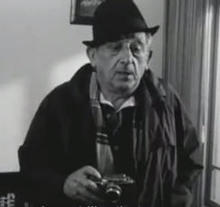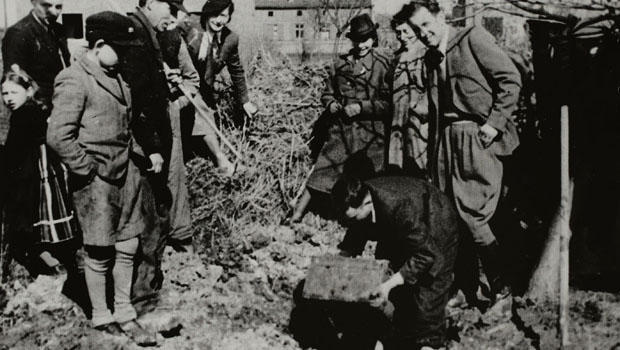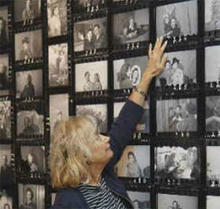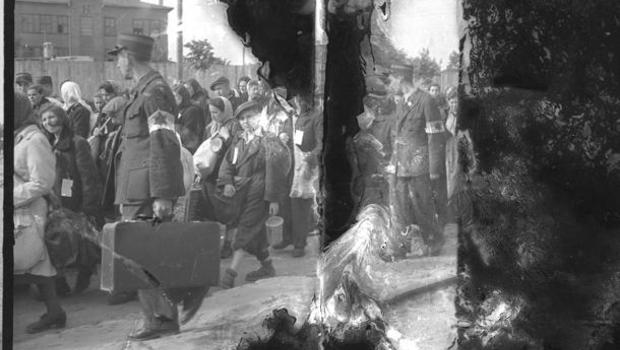An exhibit of unearthed photographs is offering a heartbreaking glimpse into an unforgivable part of our past. With Chip Reid, we uncover it again:
Krysia Rosenstein speaks of a childhood of nightmares: “And they were always the same. I was flying above the ghetto to save myself like a bird. Always the same.”
Born during World War II, Rosenstein spent the first years of her life in a Nazi-controlled ghetto in Łódź, Poland.
“It was a work camp, but it was slave labor really,” she told Reid. “In order to be kept alive you had to work. And they gave very little rations. There was a lot of hunger.”
The Łódź Ghetto (pronounced ludge in Yiddish) was one of hundreds of Nazi ghettos across Europe, used to separate Jews from the rest of the population. Most residents were sent to concentration camps, unless disease or starvation killed them first.
Abraham Neuman, now 94, is also a survivor from the ghetto. “I am puzzled what kept me alive,” he said. “We were a family of six kids and parents. Nobody survived.”
“When people were taken out of the ghetto and sent to other camps, did people think, ‘Well, maybe I’m going to a better place’? Or did know what was going to happen?” Reid asked.
“The first time when they take you out from the ghetto you didn’t know, because we didn’t have no newspaper, no radio,” Neuman said. “We didn’t know what was going on in the world. All they was thinking, ‘Maybe a miracle will come.'”
Two hundred and forty thousand Jews were brought into the Łódź Ghetto. By the time the war ended, fewer than 900 were left.
The Łódź Ghetto is now the subject of a photography exhibit at the Museum of Fine Arts, Boston, called “Memory Unearthed.” The photos are by a man named Henryk Ross, a Polish Jew who lived inside the ghetto as both prisoner and official photographer.
One picture shows a mass deportation. “We can see these people being led to either an extermination camp or a concentration camp,” said curator Kristen Gresh.
Ross had shown up at the ghetto with a camera, and because he had experience in photography, he was named one of the official photographers. His job was to take ID photos. In addition, Gresh said, he was assigned to do propaganda stories. Ross’ “happy” photos were meant to show that life was just perfectly normal in the ghetto.
But the reality of life in the ghetto was so horrific, so unfathomable, Ross knew he had to photograph it for the rest of the world to see.
“He was using his camera as a weapon of resistance,” Gersh said, “and it was truly an act of resistance to go snap a shot, or hide somewhere to take photographs.”
“Was he risking his life?” Reid asked.
“Absolutely. He was risking his own life, and he was risking his wife’s life as well.”

Henryk Ross in the 1970s, demonstrating his surreptitious photography.
Ross demonstrated how he hid his camera in a 1979 documentary, “Memories of the Eichmann Trial.” “I would open my coat, like this, and keep going,” he said.
Committed to leaving a historical record, Ross eventually put 6,000 negatives in a box, and buried them.
“He wasn’t sure that he himself was going to survive,” Gersh said. “He miraculously was one of the 877 survivors in January 1945 when the Soviets liberated the Łódź Ghetto. And then months later he was able to go retrieve it, and literally unearth this box of memories.”

Excavating the box of negatives and documents that Henryk Ross buried in the ghetto at 12 Jagielonska Street, Lodz, Poland, March 1945.
Ground water destroyed about half of the negatives. Even those that survived were damaged. Yet Gersh said the damage to the negatives — as if they are in flames — creates a visceral effect to the images.
“So the fact that some of the negatives were partially destroyed kind of adds to the exhibit?” asked Reid.
“Absolutely,” she replied. “It feels that the photographs themselves are imbued with the history of what people were living through. So it feels very symbolic.”
Krysia Rosenstein went to the exhibit to learn what her family lived through. Her mother died shortly after the war, and her father refused to talk about it.

Krysia Rosenstein finds a photo of her mother on the exhibition wall.
Was she at all reluctant to go? “No. No. I wanted to see,” she said. “Because my memories are very limited. I don’t remember too much.”
She described the experience as “very, very emotional, very, very sad. And so then we came to the last room. And there was a whole wall of pictures, one after the other.”
And then, a familiar face.
“My father, my mother, and myself,” she cried. “And I don’t have any pictures of my father, my mother, and myself. I didn’t have — it was just unbelievable. Unbelievable. Unbelievable. It was like a miracle happened to me. It was so much joy and so much sadness at the same time.”
On that same wall where Rosenstein found her family, most faces will go unnamed … but because of Henryk Ross, not forgotten.



























